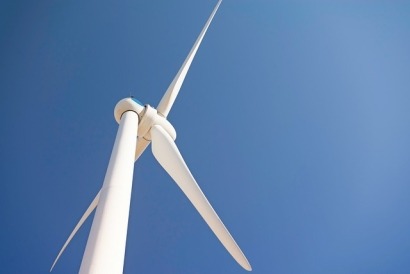
The US is embarking on an unprecedented buildout of offshore wind that will cost billions of dollars. It is expected that an astounding $12 billion in capital investment will be allocated to offshore wind expansion in an aim to dramatically increase offshore wind power capacity, with a target to reach 30GW by 2030 as opposed to 42MW today. A significant proportion of this investment will come from public money.
The new report, entitled "Why US offshore wind must address fire risk," argues that, with this significant public investment, US offshore developers and owners have a huge responsibility to ensure assets are robustly protected, including against the risk of fire.
The report strengthens this argument by looking at insurance data, which estimates one in every 2,000 wind turbines will have a fire in its lifespan. The report also addresses the increased fire risks on an offshore asset due to the sheer size, location and the conditions these assets are exposed to, as well as the costs and complexity for routine operations and maintenance, and lack of access to traditional firefighting methods.
A fire on an offshore wind asset also has more far-reaching consequences, some of which may not currently be considered by developers and owner/operators. The report draws out four key impacts of a fire incident on an offshore turbine:
1. Risk to personnel
2. Negative environmental repercussions
3. Financial costs
4. Reputational damage
The risk to personnel on an offshore asset is higher due to the remote location and complexity of a potential evacuation. Also due to asset location, a fire incident on an offshore turbine can have detrimental effects on the surrounding environment such as debris from an asset falling into and polluting the water, which can harm marine life. Such environmental events cause significant reputational damage as well.
In terms of financial costs, for onshore turbines, the replacement of one turbine can cost up to $9 million, including the revenue loss of up to 18 months of down-time. This estimate is approaching double for an offshore asset.
"Speed is everything when it comes to tackling fires in a wind turbine," says Ross Paznokas, Global Business Development Manager – Clean Energy, Firetrace. "A faulty electrical component, for example, can, in a matter of minutes, ignite a fire that leads to the total destruction of the turbine. With the level of investment on the line, much of which will be public money, developers and operators cannot afford to overlook the risk of fire."
"At the moment, 75% of the inquiries we have for our fire suppression technology come from organizations that have already experienced a fire event. With so much money at play, protecting assets should be a key priority. We need to start proactively installing automatic fire suppression technology, which cost less than the rounding error in a renewable project budget, to prevent the impacts of fire incidents in offshore wind."
Download the full report here

